Safety Culture in the News
Mariners need more safety management training, experts say
Mariners need more safety management training, experts say
Another hurdle some companies’ safety management teams face is a negative safety culture, which can have a major influence on human factors such as behavior and performance, incidents and injuries.
Kenya Nixon, regional director of loss control and safety for Cooper Consolidated, said among the expressions she most dislikes hearing is “that’s the way we’ve always done it.” She said the words “safety first” are used a lot but, “let’s be honest, it’s not always first.”
Implementing culture changes breaks down this way, according to Nixon — about 20% want to change, 60% are on the fence, and 20% don’t ever want to change. Individual companies have to want to change. “It’s about communication,” she said. “Don’t just tell them what to do, tell them why.”
Chief Inspector calls for ‘significant reforms’ across fire and rescue services in England
In his first annual assessment of fire and rescue services in England, Her Majesty’s Chief inspector of Fire and Rescue Services Sir Thomas Winsor acknowledges the strong commitment from firefighters to protect the communities they serve.
The sector’s greatest strength is in how it responds to emergencies, with demonstration of a number of life-saving initiatives and a strong health and safety culture. However, the fire and rescue sector needs significant reform in several areas.
In his report published on 15th January, Sir Thomas states that the sector needs to improve how it complies with building fire safety regulations.
He also stated that, despite some examples of outstanding culture in some services, other services needed to do more to address ‘toxic’ environments for staff and improve the diversity of the workforce.
Sir Thomas acknowledges the importance of strong trade union representation. However, he has expressed concern that union influence sometimes prevents necessary reform in some areas.
He also highlighted there being ‘unjustifiable variation’ in the level of service the public receives, across the country.
How Safe Is Air Travel in 2020, Really?
How Safe Is Air Travel in 2020, Really?
This year’s top 20 safest airlines list from AirlineRatings is based on a seven-point rating system that includes not just crash data but also more specific information about individual incidents, fleet age, pilot training, financial performance, and other factors. The list was headed by Australian flag carrier Qantas (a longtime winner) and also included international heavyweights like Emirates, Lufthansa, Singapore, and Virgin Atlantic and Australia. Top-ranked U.S. airlines included Alaska, American, and United.
Aviation experts agree that a strong safety culture and an active regulatory role play an important part in the results. “Countries that have a serious government oversight and operations that provide meaningful training to pilots and others, have an accident rate that is outstanding,” said John Goglia, an aviation consultant and former member of the United States’ National Transportation Safety Board. “Those countries that don’t put that kind of effort into their operations have experienced some serious problems.”
But while older planes have generally been considered more accident-prone, the Max problems have raised concerns about new technology. The To70 report stated that fatal accidents in 2018 and 2019 that led to the grounding raised questions about how aviation authorities approve aircraft designs and about how much pilot training is needed on new systems. The firm reported that it expects that the 737 Max will gain permission to fly again in 2020.
Boston T safety culture concerns
Advocates call for T control board extension
A three-member group of outside safety experts issued a report in December that blamed the absence of a strong safety culture at the T partly on turbulence at the top of the agency, particularly the high turnover of general managers. The report also criticized the control board for holding too many meetings each month and drawing the attention of top managers away from the jobs that they need to be doing.
After the release of the report, Gov. Charlie Baker promised to file legislation this month creating a successor to the control board. He said the measure would address two of the safety panel’s concerns – reducing the number of monthly meetings (current law requires three a month) and appointing one member with safety and operations experience.
Automated Car Culture Challenge
With some interesting new tidbits, the board’s conclusions on the cause of the accident matched my predictions — the did not place blame on the many faults in Uber’s software, bad as they were, because the system was designed to expect such faults to exist and had a human safety driver there to supervise and take over when they occurred. Uber did a terrible job of designing their safety culture, and of hiring, training and monitoring their safety drivers, and that night, the driver was watching a video on her phone instead of the road, leaving her to not take control in a situation where she should have easily done so — and a tragic result.
One notable thing in the findings was a focus on “automation complacency” — the situation where humans quickly become bored with automated systems that need only rare attention, and then get bad at paying that attention. Uber didn’t account for that at all. Some teams have a camera monitor the driver’s gaze. Teslas require their drivers to keep tweaking the wheel to show they are there. We can expect regulators to follow the NTSB and start pushing for better countermeasures to complacency during testing and driver-assist.
Maritime Safety: Subchapter M is a Positive Regulation
Maritime Safety: Subchapter M is a Positive Regulation
In summing up, based on my experience and involvement as also work with the U.S. Coast Guard, I can say this is a very well-intended, well-meant initiative to help the towing industry. The real joy will come from its correct implementation. Subchapter M is not only about compliance. It is about building a safety culture. It encourages the industry to streamline and reduce the paperwork that supports compliance / conformity, by greater use of technology, by identifying common areas and integrating documentation requirements and also motivating the workforce to use and improve the system.
Stop labelling kids from poor backgrounds 'unlucky no hopers' and let them take risks says Princess Anne
Princess Anne has warned against labelling children from deprived areas as “disadvantaged” no-hopers and says we need to be more willing to let kids take risks.
The outspoken Gloucestershire Royal fears they way society relies on statistics can put children into boxes and make assumptions about their life chances based on the figures.
And the horse-loving Princess says a health and safety led culture holds children back by stopping them from developing their own natural risk-taking ability.
Kelowna fire department opens up about job-related PTSD
Kelowna fire department opens up about job-related PTSD
Gone are the days when firefighters would only put out fires.
Today, they respond to all kinds of urgent calls.
“We assist B.C. Ambulance with all kinds of medical calls, we have several specialty teams, we have a high-angle rope team, we do swift-water rescue, ice rescue, we have a hazmat (hazardous material) team, that helps the whole regional district with hazmat issues,” said Kelowna firefighter Ryan Corsi.
“We have a marine rescue boat for issues on the lake, so everything, motor vehicle accidents.”
Many of the calls are difficult, and, over time, can and do take a heavy toll on a firefighter’s mental health.
“We deal with a lot of the sadder types of calls, a lot of death, a lot of injuries, Corsi said. “Anything to do with children, it’s never a nice thing. Those are the ones … it’s usually a little quieter on the way back to the hall.”
Trauma and post-traumatic stress disorder (PTSD) is said to be prevalent among first responders.
“A recent study that came out suggested that 40 per cent of firefighters are struggling with PTSD or some kind of a stress injury,” said Troy Mamchur, union president of local 953. “And I think that number would be higher if you actually calculated those that are coping in silence.”
Insurance and safety culture after New Zealand volcanic eruption
Volcano victims’ dignity betrayed as NZ’s no-fault system lets tour operators off the hook
While such schemes patently fail the fairness test, they also fail the economics test. No-fault schemes typically become financially unsustainable. The ACC has moved from one financial crisis to the next over the course of its nearly five decades of life. And when there is a financial crisis, it is survivors of accidents who get less.
But worst of all these schemes fail the safety test. No-fault schemes such as the ACC foster a lax safety culture. There is little accountability when preventable accidents occur. Compared with Australia, the ACC has fewer incentives or serious consequences for companies to ensure safety is prioritised. In the knowledge they cannot be sued for negligent conduct, many businesses adopt a cavalier safety approach. That approach in New Zealand has been highlighted many times during the life of the ACC.
Australia has many safety-nets of coverage for people injured who cannot pursue legal action. But taking away the right to sue for negligent conduct ignores basic psychology, and ignores compelling evidence here and in countries such as Canada and Britain. The right to bring claims for negligence creates powerful incentives for safer behaviour. Whether it’s aircraft, hospital or car safety, workplace injuries and death, or efforts to reduce asbestos and silica exposure and smoking, the exercise of common law rights in holding negligent parties to account and forcing improved standards has long been to the benefit of the wider community.
Cybersecurity: Chernobyl and its Cyber Lessons related to safety culture
Cybersecurity: Chernobyl and its Cyber Lessons
The human factor was considered a major factor in both official reports into the accident, with much focus on an inadequate “culture of safety”—which was prevalent not only in operations but in all stages of the power plant’s lifespan, including design, engineering, construction, manufacturing and regulation.
“The accident can be said to have flowed from a deficient safety culture, not only at the Chernobyl plant, but throughout the Soviet design, operating and regulatory organizations for nuclear power that existed at that time.”
If we apply a cyber lens to the contributing factors to the accident, we can learn a lot about how to keep our organizations safe, not least by generating a culture of security. At a minimum, ask the following questions:
Are your staff trained and experienced to do the roles they are expected to do? How comfortable are your teams at running outside of normal operating conditions? How clear are your policies and procedures—are they written to be understood? Have you stood back and considered any potential design flaws in how your business operates? How compliant are you with law and regulation? Not knowing isn’t a great defense.
Bhutan Construction Industry: Loopholes in OHS rule blamed for poor safety measures
Loopholes in OHS rule blamed for poor safety measures (http://www.kuenselonline.com/loopholes-in-ohs-rule-blamed-for-poor-safety-measures/)
The DG pointed out that even large contractors do not have safety committees, safety guidelines and safety officers because details were missing in how to implement the regulation. “There were no penalties for the defaulters because it isn’t clearly stated in the law.”
Awareness of OHS in the construction industry was limited, which according to DG Tenzin was mainly because the focus was always on construction quality, the progress of the work and the cost. “The safety culture is not picking up because there are no effective construction safety guidelines.”
Best practices
There are only a handful of companies that follow safety rules. The Construction Development Corporation Limited is one. The Vajra Builder, who was invited to share their experience at the seminar, is one of the few in the private sector.
Sharing an experience, Vajra Builder’s project engineer, Sherab Chojay said a national worker, who was working on top of a five-storied building in Paro, slipped and fell off the building. However, nothing happened as he was wearing a safety harness, he said.
Massachusetts State Government culture challenge
[Mr. Fix-it struggling with culture change[ (https://commonwealthmagazine.org/opinion/mr-fix-it-struggling-with-culture-change/)
IT’S THE CULTURE of state government versus the Baker administration and the winner, by a knockout in the fifth round, is state government culture.
Think of the MBTA and the Registry of Motor Vehicles with their deeply rooted cultures of self-protection and risk avoidance.
Gov. Charlie Baker has staked a good measure of his credibility on fixing those two agencies which, unlike most state agencies, interact with a broad swath of the population in visible and critical ways.
Five years into his governorship, it is abundantly clear that the administration has seriously underestimated the task of implementing needed changes without simultaneously changing the culture of these agencies. Culture is hard to define but anyone who has worked in an organization of any size knows that culture drives the behavior of that organization and that changing that culture requires an enormous effort. At both the T and the Registry, Baker has made laudable efforts to fix longstanding problems, but those efforts, in largely ignoring the underlying cultures of those organizations, have compromised a broader public vision.
It’s not just that the shortcomings of these agencies are on public display (at the T on an almost daily basis), but in both cases recent independent reports have highlighted how the administration’s focus on certain priorities at each agency has had serious unintended consequences including, most alarmingly, for public safety.
'FAA culture needs to change,' lawmaker asserts ahead of 737 Max hearing
(‘FAA culture needs to change,’ lawmaker asserts ahead of 737 Max hearing) [https://abc11.com/faa-culture-needs-to-change-lawmaker-asserts-ahead-of-737-max-hearing/5745815/]
In 2003, DeFazio voted against the initial bill that mandated the ODA program.
“We can certainly mandate changes in the approval process and the oversight process by the FAA,” DeFazio said. “We’re already thinking of options of changes we might make.”
The committee chairman hopes to hear firsthand from Dickson and other FAA officials on Wednesday about how the agency plans to change its culture.
“I’m hoping the FAA Administrator has some recommendations of his own,” he said.
DeFazio has also raised the alarm about the safety culture inside Boeing – specifically production pressures that might indicate the company put profit over safety.
The Unsafe Superstar At what point, if any, do needed skill sets justify safety compromises?
The Unsafe Superstar At what point, if any, do needed skill sets justify safety compromises?
But there is a fly in this particular ointment. He does not like to wear safety glasses in the field, even on sites where the client has a robust safety culture. It’s not just the glasses, either. He has not yet made his 90-day probation, and you have already recorded several unsafe acts he has committed — and those are just the ones you know of. Other crew members have expressed concern, and three have said they do not want to go out into the field with him again.
You have on several occasions asked him to stop work and tell you how he can do the task more safely. His attitude was not cooperative. When you started writing him up, your boss called you into his office and told you the company really needs this guy. Then your boss said, “If you annoy him and he quits, that will cost you your job. Understood?”
So how do you resolve this dilemma? Your boss is not thinking clearly. Nobody is so important that a company can’t fire them. The new employee — superstar or not — is a liability to the firm and to himself. And now your boss is a liability, too.
Loophole limited scrutiny before deadly NYC helicopter crash
Loophole limited scrutiny before deadly NYC helicopter crash
FlyNYON operated under the government’s least stringent standards “to the detriment of their customer’s safety” because it described the purpose of its flights as photography, not sightseeing, National Transportation Safety Board Chairman Robert Sumwalt said. … “FlyNYON has done just about everything they can to skirt safety, accountability and best practices within their industry,” said Schumer, a New York Democrat. “The helicopter company has proven time and again to be reckless, brazen and a hazard high above, and even down below.”
In addition to a standard lap belt and upper body restraint, FlyNYON provided passengers with a nylon fall-protection harness — akin to something bought at Home Depot — that could be released only by cutting a tether with a provided knife or unscrewing a carabiner at their backs, investigators said.
The board also slammed the safety culture at FlyNYON, which arranged the flight, and Liberty Helicopters, the company that FlyNYON contracted with for helicopters and pilots. FlyNYON’s CEO stressed profits over safety and remarked that pilots who complained “can’t get their snowflake feelings hurt,” according to Homendy.
In a statement, FlyNYON said safety has always been its “first priority and we have made changes to our operations to help ensure an accident like this never happens again.”
"Alarming" Safety Report on Boston Transit System Makes Case For New $$$, DeLeo Says
“Alarming” Safety Report Makes Case For New $$$, DeLeo Says
House Speaker Robert DeLeo on Monday evening questioned whether the $50 million for the MBTA hung up in a legislative dispute would be put toward safety as he used a damning report released on the safety culture at the transit agency as a opportunity to make his case for new revenue.
Fatal lack of attention to safety blamed for death of man hit by jet ski at Lake Trevallyn Dam
Fatal lack of attention to safety blamed for death of man hit by jet ski at Lake Trevallyn Dam
Fatal lack of attention to safety blamed for death of man hit by jet ski at Lake Trevallyn Dam The death of a 22-year-old Launceston man just weeks before his wedding has been described by a coroner as a tragic case illustrating “a fatal lack of attention to proper safety culture”.
Key points: Luke Rice, 22, died after being hit by a jet ski one month before he was due to be married A passer by performed CPR on Mr Rice, but he later died at Launceston General Hospital Coroner Simon Cooper is urging all jet ski riders to be licensed Luke Rice was riding his jet ski next to a friend on Lake Trevallyn Dam on January 2, 2017.
Mr Rice fell off his jet ski and was hit by another jet ski rider, Baden Apted, who was travelling in the same direction.
Mr Rice’s friend told the inquest that Mr Apted’s jet ski had hit Mr Rice’s jet ski from behind, sending him flying two to three metres through the air.
Horizon Air warns about pilots’ lax safety culture
Horizon Air warns about pilots’ lax safety culture
SEATTLE — Horizon Air’s head of flight operations recently warned of a a lax safety culture among the airline’s pilots and called for urgent action to prevent a serious air accident.
The Seattle Times reported that John Hornibrook, the Seattle-based airline’s president of flight operations, wrote in an internal Nov. 27 email message: “If we sit back and do nothing, we will have an accident. Nothing good can come of the trajectory we are currently on.”
The email was sent to top airline managers and pilot leaders.
The incidents Hornibrook listed ranged from pilots going over airspeed limits to aircraft approaching stalls, and also included weather-induced threats that perhaps could have been avoided.
In an interview with the newspaper, Hornibrook and Horizon president Joe Sprague said the distribution of the email should be seen as an example of Horizon’s high safety standards.
“The memo was meant to respond to the spike we saw in irregular events,” Hornibrook said. “I’m not sitting back and waiting for something bigger.”
Patient safety in Gambia
High incidence of maternal deaths: Does medical and clinical practice needs stringent regulation? High incidence of maternal deaths: Does medical and clinical practice needs stringent regulation?
It is often asserted that tort law, and the threat of tort law with regulation, is unhelpful in terms of medical care and treatment as the fear of litigation discourages the open admission of medical and clinical errors. To this end, the severe option of criminalising such errors is also viewed negatively from a safety culture perspective.
But as maternal mortality ratio remains stubbornly high due to sepsis, haemorrhage and eclampsia, there is an urgent need for the Government to take measures that would strengthen the regulation of healthcare and clinical practices so as to prevent preventable deaths. It is indeed obligatory on the State to provide the resources and the necessary infrastructures to promote effective healthcare delivery. But also necessary for the Government to adopt a strategy to increase its steering and regulatory capacity; with object of influencing clinical practice if it is to curtail medical malpractices. Without effective legislative framework, patients cannot receive good healthcare necessary to preserve lives.
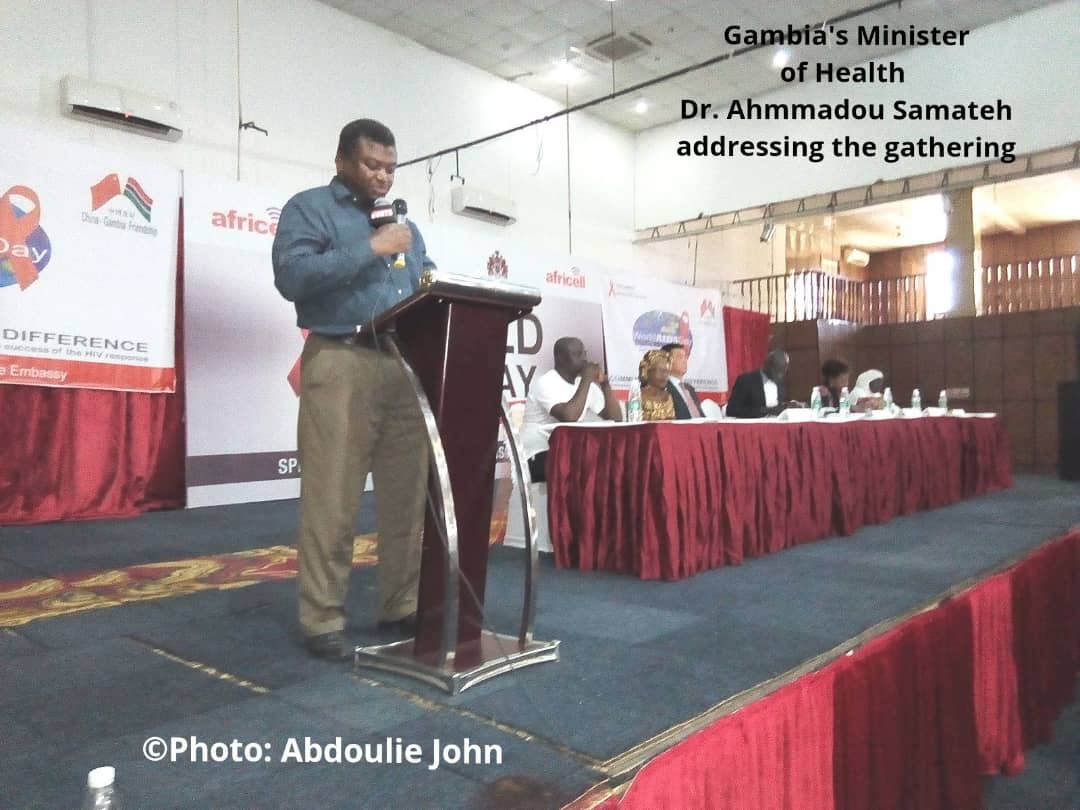
Nigeria must step up regulation of workplaces
In one case, Mr. Sunday Usenobong fell into the crucible of an iron and steel manufacturing concern situated in Ikorodu. Given that crucibles are the receptacles for melting metal and can reach extremely high temperatures, it is no surprise that he died instantly. In the other case, a moulding machine operator, Mr. Femi Olatunde, had his head trapped in the machine he was operating. He also died on the spot.
Both cases reveal a toxic mix of inadequate training, the lack of protective clothing, the absence of safety procedure, the failure to institute and implement workplace safety measures, and an overall dearth of a safety culture.
How was it possible that the late Mr. Usenobong was working so close to a superheated crucible which apparently did not have any safety barriers? Was he dressed in appropriate clothing, including a helmet and non-slip boots? Was there any signage providing clear warning to workers of safe distances from the crucible, or emergency alarms which would go off the moment safety measures were breached?
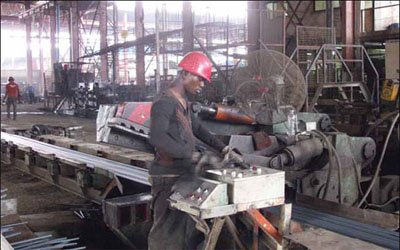
Your Local Hospital Is Much More Dangerous Than It Could Be
Your Local Hospital Is Much More Dangerous Than It Could Be
“Nobody goes to work in the morning to harm a patient,” is a health care truism. Yet a national survey of hospital patient safety culture found that 40% of respondents agreed that “hospital management seems interested in patient safety only after an adverse event happens.” Perhaps coincidentally, 43% of hospitals earned a “C,” “D” or “F” grade in the latest report from the Leapfrog Group, a nonprofit that publishes patient safety report cards on individual hospitals.
The challenge with regard to patient harm is changing from a culture that sees “inevitability” to one that is passionate about “preventability.”
Driving air safety, security at the apron
Driving air safety, security at the apron
Rising incidents involving airlines, ground handling companies and other ancillary services providers at airport aprons are attracting the attention of regulators, especially because of their attendant effects on safety and security. Experts say enhanced training, improved regulation and adherence to operational procedures may reduce infractions at the air side, writes KELVIN OSA OKUNBOR.
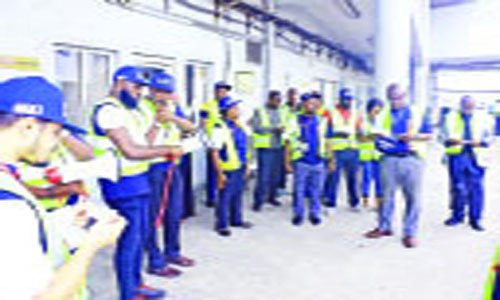
Health Concerns Mount as More Old Sewer Pipes Are Lined with Plastic
Health Concerns Mount as More Old Sewer Pipes Are Lined with Plastic Residents near renovation sites claim noxious emissions from pipe inserts are making them sick
Two years ago, a worker died on the job while inside an underground pipe being renovated with CIPP. An autopsy seen by this writer stated that the cause of death was drowning but that styrene toxicity contributed to it. The incident prompted an OSHA investigation. As a result, the company paid $55,000 in penalties, in part for exposing employees to levels of airborne styrene exceeding the agency’s worker safety limits. Many photographs show CIPP workers who are not using respirators that could protect them from inhaling emissions, raising questions about the safety culture at job sites.
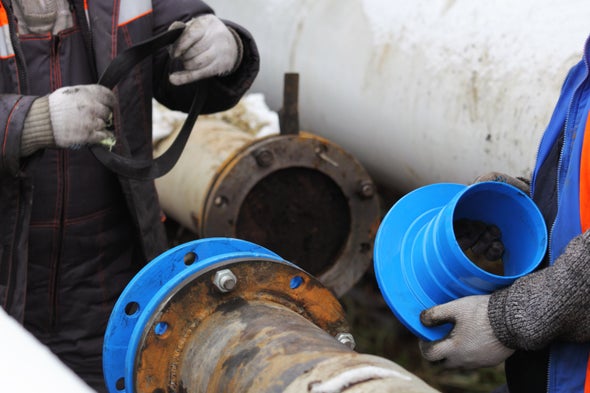
Accuform celebrates 5 years without a lost-time accident
Accuform celebrates 5 years without a lost-time accident
Accuform’s President, Rob Ogilvee and Safety Director Mike Giovinazzi take no credit for the 1825 days that Accuform has gone without a lost-time accident in the workplace. That credit goes to their 270 employees who have embraced a “culture of safety,” putting best practices to use with regard to themselves as well as their co-workers.
The staff and management of Accuform celebrated their accomplishment on Monday, Nov. 11, 2019 with an outside BBQ and games, as well as picking up new t-shirts commemorating the occasion and a desk toy called “Pinch Point Pattie,” part of a collection of action figures depicting OSHA (Occupational Safety and Health) violations that can cause workplace injury.
Accuform is a member of the Justrite Safety Group, a global workplace safety company with 1700 employees worldwide. According to President and CEO, Mark McElhinny
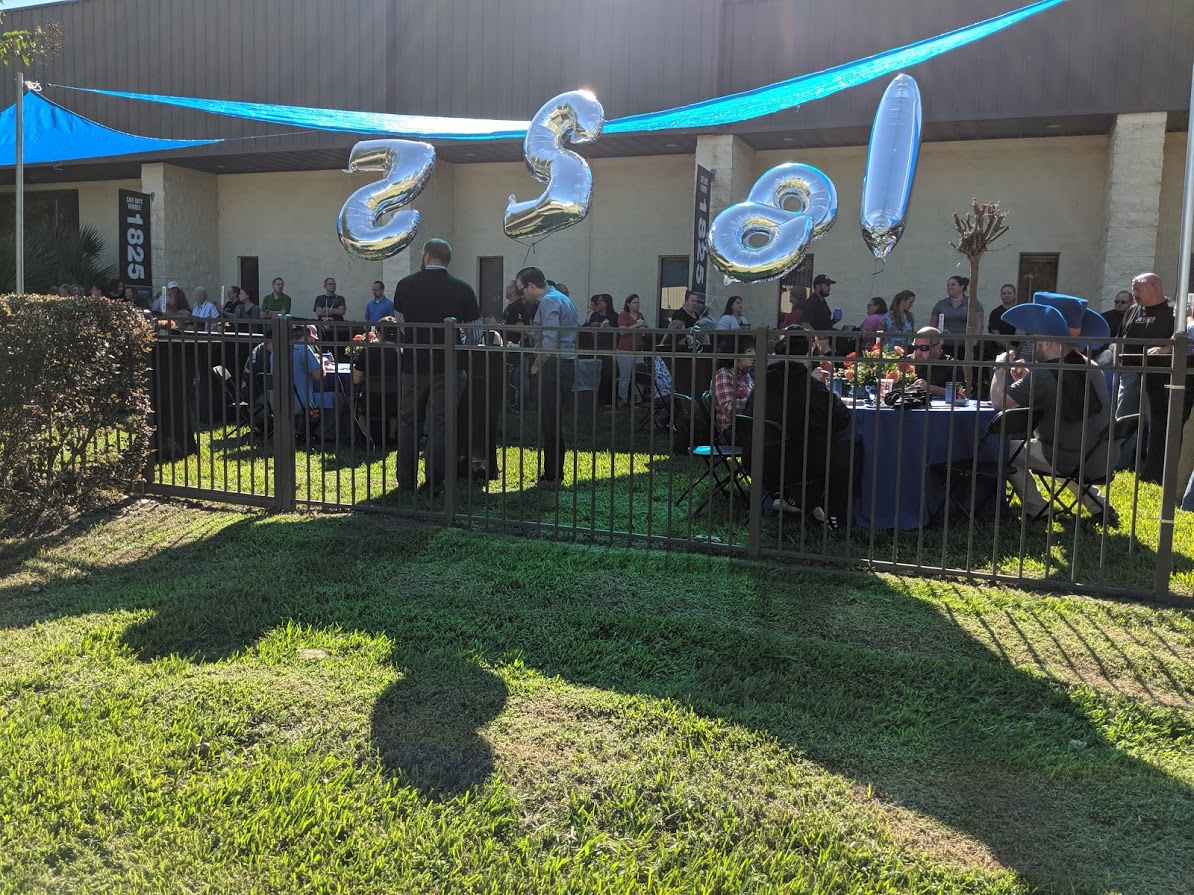
'3 didn't make it home tonight'
‘3 didn’t make it home tonight’
Experts have pointed out that the lack of safety culture and safety climate are the direct causes for workplace accidents in construction sites. The National Institute of Occupational Safety and Health in the U.S. defines these terms as follows:
“Safety culture” involves deeply held but often unspoken safety-related beliefs, attitudes, and values shared by employees and employers that affect how things are done in an organization. Safety culture is a subset of, and clearly influenced by, organizational culture. Organizations often have multiple cultures or subcultures, and this may be particularly true in construction.
A “safety climate” is defined as the shared perceptions of safety policies and procedures by members of an organization at a given point in time, particularly regarding the adequacy of safety and consistency between actual conditions compared to espoused safety policies and procedures. Homogeneous subgroups tend to develop shared perceptions while between-group differences are not uncommon within an organization.
What’s not said, especially in Korea, is that both safety culture and climate are themselves subsets of the national culture on this issue, one that doesn’t believe that human lives are paramount to economic activities. It’s one of the unspoken and pernicious side-effects of the Miracle on Han River in which the “Ppali, Ppali” and “Get it done at all costs” spirit took precedence over human safety and lives. This wasn’t just rogue companies cutting corners. This was a national philosophy and policy to prioritize economic growth at all costs. Human lives, especially those of the blue-collar laborers, were a commodity that could be cheaply replaced. Safety was a luxury that couldn’t be afforded.
